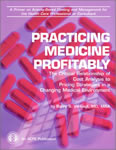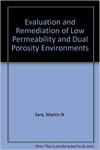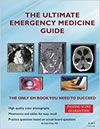All Articles
Addiction Issues & Substance Abuse
Hotels & Hospitality
Aerosols - Aerosol Products
Internet Marketing
All-Terrain Vehicles (ATV / UTV)
Investigation & Surveillance
Arms - Guns - Weapons
Islamic & Sharia Law
Audio Forensics
Jails - Prisons - Correctional Facilities
Common Interest Development
Law Enforcement
Communication
Legal Issues
Construction
Lubricants
Conveyor Belts
Meteorology
Crisis Management
Organic Chemistry
Digital Forensics
OSHA
Domestic Violence
Physician Assistants
Dram Shop Liability
Pollution - Air Quality Control
Emergency Medicine
Psychiatry
Engines (Combustion - Diesel)
Real Estate
Equipment Leasing
Remote Sensing Image / Satellite Data Analysis
Ethics / Ethical Duties
Search Engine Optimization (SEO)
Eyewitness Testimony
Slip, Trip & Fall
Failure Analysis
Speech-Language Pathology
Film & Entertainment Industries
Spirituality
Finance
Statistical Analysis
Fires & Explosions
Technology
Forgery & Fraud
Toxicology
Hazardous Materials
Travel & Leisure
Healthcare
Vocational Rehabilitation And Counseling
More...

MEDICINE-PAGE ARTICLES MAIN PAGE
. Contact Us if you are interested in having your work published on our website and linked to your Profile(s).
All Articles
Accident Prevention & Safety
Fuel Systems
Accounting
Industrial Precision Cleaning
Aerosols - Aerosol Products
Insurance Coverage Analysis
Anger Management & Related Issues
Investigation & Surveillance
Appraisal & Valuation
Land Use
Archaeology - Archeology
Manufacturing
Branding - Brand Management
Marine - Maritime
Construction
Market Research
Cosmetology: Hair / Makeup
Medicine
Credit Damage
Meditation
Crime Scene Investigation
Mining
Dental - Dentistry
OSHA
Digital Forensics
Physician Assistants
Documentation Examination & Analysis
Plants & Trees
Dram Shop Liability
Plastic / Reconstructive / Cosmetic Surgery
Emergency Medical Services (EMS)
Search Engine Optimization (SEO)
Energy - Utilities
Securities
Engines (Combustion - Diesel)
Spirituality
Enterprise Resource Planning (ERP)
Supply Chain Management
Equipment Leasing
Surveys
Ergonomics
Telemedicine - Remote / Virtual Medicine
Ethics / Ethical Duties
Terrorism - Homeland Security
Expert Witnessing
Toxicogenomics
Food & Beverage
Transportation
Forensic Analysis
Underwriting
More...
Featured Articles
There are no active articles here at this time. Please use the search bar, try another category, or contact us if you would like to contribute an article.
This Article is unavailable. Contact Us
Search articles by title, description, author etc.
Sort Featured Articles
Featured resources
Practicing Medicine Profitably : A...
by Barry S. Verkauf, MD
Evaluation and Remediation of Low...
by Lorne G. Everett, PhD, et al
The Ultimate Emergency Medicine Guide
by Sajid Khan, MD
Follow us










